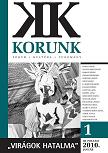Virág és virágkultúra a késő reneszánsz erdélyi kertekben (16-17. század)
Flowers and Flower Culture in Transylvanian Late Renaissance Gardens (16-17th Centuries)
Author(s): Zsigmond Csoma, Kinga Tüdősné SimonSubject(s): Cultural history
Published by: Korunk Baráti Társaság
Keywords: garden culture; late Renaissance; Transylvania; national freedom; politics
Summary/Abstract: The late Renaissance/early modern gardens of Transylvania represented an idealized medium of post-mediaeval life. They were also a symbol of national freedom as a space where harmony between historical reality and future ideals of independence could be achieved. The garden functions as a mirror of its owner, the Transylvanian noble lady and, moire generally, of the politics of this region situated on the frontier between East and West, aimed at achieving balance. It stands as a testimony for the innovative spirit, reticent towards Habsburg rule, yet already turning against obsolete traditions.
Journal: Korunk
- Issue Year: 2010
- Issue No: 01
- Page Range: 24-33
- Page Count: 10
- Language: Hungarian

